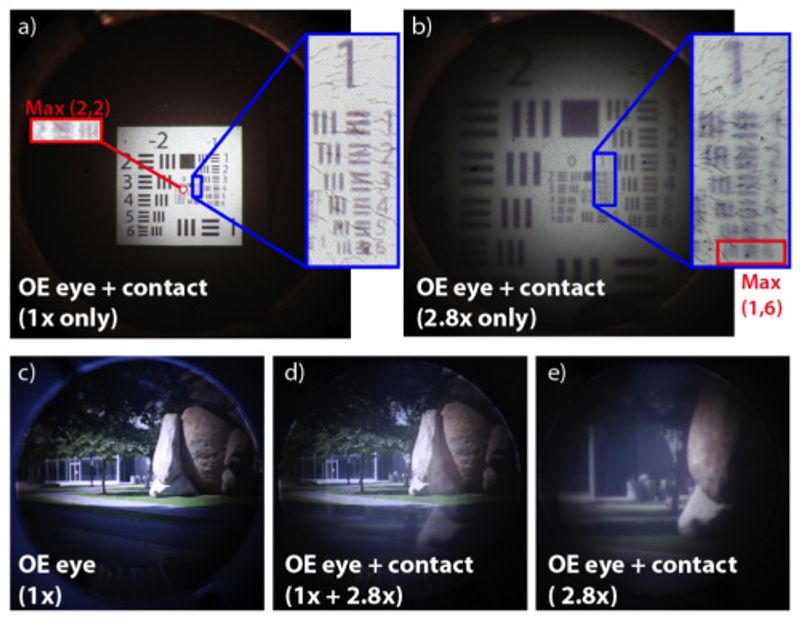Can contact lenses do more than just correct sight? Perhaps extend our healthspan?
Image credit: https://www.pexels.com/photo/white-magnifying-glass-on-blue-table-5843417/

Please leave the feedback on this challenge
Necessity
Is the problem still unsolved?
Conciseness
Is it concisely described?
Bounty for the best solution
Provide a bounty for the best solution
Bounties attract serious brainpower to the challenge.
[1]https://onlinelibrary.wiley.com/doi/abs/10.1002/adhm.201900368
Creative contributions
Non-invasive measurement of glucose levels

[1]Lin YR, Hung CC, Chiu HY, et al. Noninvasive Glucose Monitoring with a Contact Lens and Smartphone. Sensors (Basel). 2018;18(10):3208. Published 2018 Sep 22. doi:10.3390/s18103208
[2]Lane JD, Krumholz DM, Sack RA, Morris C. Tear glucose dynamics in diabetes mellitus. Curr Eye Res. 2006 Nov;31(11):895-901. doi: 10.1080/02713680600976552. PMID: 17114114.
Please leave the feedback on this idea
Glaucoma progression-monitoring contact lens

[1]Dunbar GE, Shen BY, Aref AA. The Sensimed Triggerfish contact lens sensor: efficacy, safety, and patient perspectives. Clin Ophthalmol. 2017;11:875-882. Published 2017 May 8. doi:10.2147/OPTH.S109708
Please leave the feedback on this idea
Delivering healthspan or lifespan drugs to the eyes

[1]Kim, Joohee, Eunkyung Cha, and Jang‐Ung Park. "Recent advances in smart contact lenses." Advanced Materials Technologies 5.1 (2020): 1900728.
Please leave the feedback on this idea

Please leave the feedback on this idea

Please leave the feedback on this idea

Please leave the feedback on this idea
Contact lenses and the risk of eye infections and diseases

[1]Cheng, Kam H., et al. "Incidence of contact-lens-associated microbial keratitis and its related morbidity." The Lancet 354.9174 (1999): 181-185.
[2]Szczotka-Flynn, Loretta B., Eric Pearlman, and Mahmoud Ghannoum. "Microbial contamination of contact lenses, lens care solutions, and their accessories: a literature review." Eye & contact lens 36.2 (2010): 116.
Please leave the feedback on this idea

Please leave the feedback on this idea

Please leave the feedback on this idea

Please leave the feedback on this idea
Telescopic/zooming contact lens to treat visual impairments

[1]Eric. J. Tremblay, Igor Stamenov, R. Dirk Beer, Ashkan Arianpour, and Joseph E. Ford, "Switchable telescopic contact lens," Opt. Express 21, 15980-15986 (2013)
[2]https://onlinelibrary.wiley.com/doi/full/10.1002/adfm.201903762
Please leave the feedback on this idea
Smart contact lenses with a camera to help blind people

[1]https://www.extremetech.com/extreme/180571-google-invents-smart-contact-lens-with-built-in-camera-superhuman-terminator-like-vision-here-we-come
Please leave the feedback on this idea
Silicone hydrogel contact lenses as detectors of organic solvents

[1]https://ohsonline.com/Articles/2005/10/Contact-Lenses-in-a-Chemical-Environment.aspx?Page=1
[2]https://pubmed.ncbi.nlm.nih.gov/1559287/
[3]https://www.scientificamerican.com/article/do-contact-lenses-protect/



Please leave the feedback on this idea
Please leave the feedback on this idea
Please leave the feedback on this idea